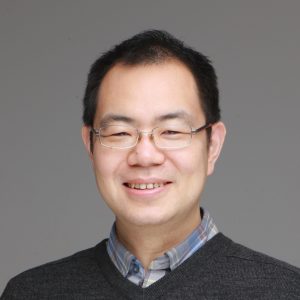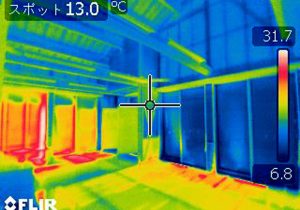Mae Lab
Find technology and design methods required for future housing, aiming for sustainable architecture that delivers neither cold nor hot and healthy and comfortable living to all people at the lowest energy cost forever.
Research Theme
In Mae Masayuki Laboratory, we are researching future passive housing that matches the climate of Japan, which can be self-sustaining only with natural energy such as the solar energy while ensuring a comfortable thermal environment.
The performance of houses has improved dramatically in recent years, and it is now possible to realize the eco-house that was once a dream. The most important thing for realizing and popularizing eco-houses that realize healthy and comfortable living with zero energy is to thoroughly analyze the local climate, especially solar energy, and to optimize the building layout, shape, and insulation performance. This design method can ensure the arrangement of openings and the performance of the outer skin.
Through “experiment” in the experimental building, “actual measurement” in the actual house, and “simulation” by numerical calculation, while getting a solid understanding of the knowledge and technology of building environment engineering and building physics, a comfortable and zero-energy house can be achieved.
We are also actively involved in design support for actual designs in collaboration with architects and working to realize comfortable and energy-saving houses that utilize environmental simulations.
Achieving non-heating and light environment with privacy by direct-gain and heat storage
Zero-energy housing using solar power generation ZEH is attracting attention for its non-heating by solar heat because the amount of power generation decreases in winter. It is indispensable to realize energy independence throughout the year by acquiring solar radiation from the opening and eliminating heat by storing and radiating heat from the frame. “Without heating”, which drastically reduces the energy required for heating in winter, is an extremely important theme for the realization of energy-independent housing. Fortunately, in the Pacific region of Japan, there is abundant solar heat even in winter, so if the performance of the opening can be improved, it is possible to eliminate heating.
To realize no heating by solar heat, it is important to take in plenty of solar heat from the openings in the daytime and stabilize the room temperature by heat storage and heat dissipation to maintain the room temperature until evening and night. By using the latent heat storage material PCM that melts and solidifies in a specific temperature range, the room temperature can be stabilized more effectively than the conventional sensible heat storage such as concrete. In Mae Laboratory, by using the heat load calculation and CFD simulation, we are working on the realization of non-heating by grasping in detail the effect of solar radiation on the indoor thermal environment in the full-scale experimental building where the rooftop experiment room whose orientation can be changed.
In addition, we are now pretend to conduct a web questionnaire to residents on the theme of environmental adjustment behavior related to the acquisition of solar radiation at the opening to understand the current situation and possibility of passive behavior according to the way of living.
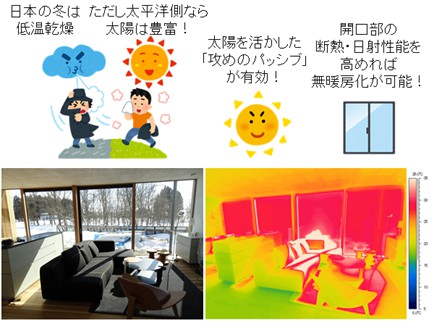
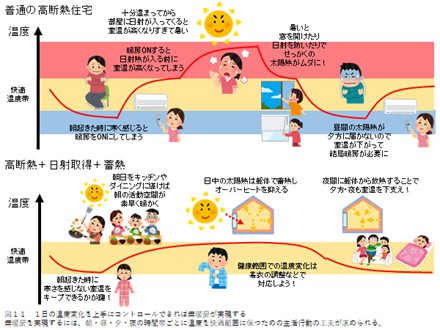
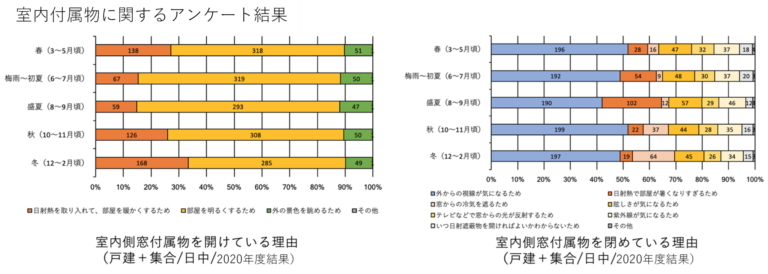
Solar energy utilization heating and cooling system
We are conducting research aimed at completing a neither cold nor hot and zero-energy house by maximizing the use of solar energy with electricity and heat. To achieve zero energy in homes throughout the year, it is essential to utilize solar heat as well as solar power generation in winter when the daylight hours are limited. In this research, we are conducting research that will lead to the development of zero-energy housing through the development of heating / cooling / ventilation / hot water supply systems that utilize roof air heat collection. It is the world’s most advanced solar heat utilization type heating / cooling ventilation hot water supply system, and it supplies all the heat and air required in a house by solar heat and heat pump.
To thoroughly reduce the amount of energy consumed for heating and cooling while maintaining a healthy and comfortable thermal environment for the entire house, we are making a design method that makes full use of thermal circuit network calculation and computational fluid dynamics (CFD).
While visiting houses nationwide for system performance evaluation and actual measurement, we thought about the unanswered theme of how to build a comfortable house with energy saving, considering the surrounding environment and climate, and the front-line site of the housing industry. We are conducting research in an environment where we can make proposals while visiting and studying.


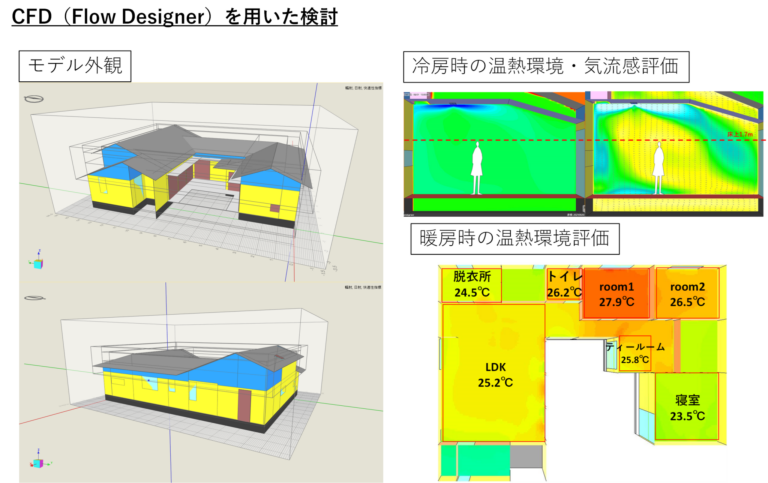
Reform on insulation and heating for exist houses
Research on performance improvement for reform of existing houses (2017-2020)
One of the research themes of MAE laboratory, “Detached house remodeling,” aims to promote the spread of heat insulation remodeling and heating remodeling with the aim of improving the performance of existing housing stock. Specifically, we conduct interviews with reform companies, visualize the remodeling effect using simulations, conduct web questionnaire surveys for owners, and create content that conveys the effects of heat insulation reform.
In addition to the global demand for energy conservation, this research theme is deeply rooted in various social issues such as the shrinking of the new housing market in Japan and health hazards such as heat shocks caused by temperature differences in houses. It is a very rewarding research theme to work with various members of society, including the Living Creation Study Group.
After 2021, we started research on energy-saving reform of apartment houses.

